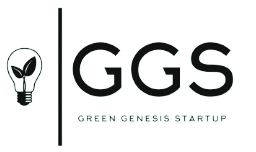
Minera Los Frailes, S.L. in collaboration with Inproyen Consulting.
http://www.mineralosfrailes.es Aznalcóllar, Seville Global
Aim of Case Study
1. Encourage the creation of alliances with the different waste generation, and management sectors, and with R&D&I institutions, and companies.
2. To improve waste management, providing incentives for its recovery.
3. Recover wasteland by immobilizing pollutants, and minimizing erosion.
4. To generate protection, and economic interest zones in the recovered areas.
5. Improve water management, and treatment, reducing the volume of water to be treated.
6. To recover biodiversity, create new ecological niches.
7. To favor socio-economic development by creating business projects.
8. To fight against climate change by reducing greenhouse gas emissions, and improving the carbon footprint.
Case Study
Andalusia is an autonomous community of Spain, with a rich multicultural heritage, located in the southwest corner of the European Union, just opposite the African continent. It is the second-largest region in Spain, and one of the most populated in the country.
Andalusia's mining history goes back more than 6,000 years, with copper, and other metals mined in the area since the fourth millennium BC. Today, metal mining is concentrated in the western sector, between the provinces of Seville, and Huelva, where the Iberian Pyritic Belt (FPI), Europe's largest reserve of polymetallic sulfides, runs through.The IPF is 250 kilometers long, and between 40, and 60 kilometers wide, stretching from south of Lisbon in Portugal to the outskirts of Seville, the capital of Andalusia. Andalusia is an autonomous Spain community with a rich multicultural heritage located in the extreme southwest of the European Union, just opposite the African continent. It is the second-largest region of Spain, and one of the most populated in the country. Just 36 kilometers from the city of Seville is the municipality of Aznalcóllar, a town with a mining tradition, with more than six thousand inhabitants, whose metal deposits have been exploited since ancient times. The Aznalcóllar mining complex, which covers an area of almost 950 hectares, is located at the eastern end of the FPI, and therefore has reserves, and probable resources of approximately 80 million tonnes of polymetallic sulfides (copper, lead, and zinc, as well as gold, and silver). The two mines, Aznalcóllar, and Los Frailes, were partially mined by surface mining methods between 1975, and 2001 when they were closed.
To boost mining activity in the region, and exploit the potential of the existing resources for the benefit of the public, in early 2014 the Andalusian Regional Government launched an international public tender for the reopening of the mine. In addition to the best technical feasibility, the proposals had to comply with maximum safety parameters, and economic, social, and environmental sustainability., and the Grupo México-Minorbis consortium was awarded the mining rights for the exploration, and exploitation of the Aznalcóllar complex.
The project’s first phase is the characterization, and diagnosis of the environmental problems, which allows the sectorisation of the risk areas to be established, and the design, and formulation of the required Tecnosoles that allow for more efficient environmental recovery.
The second phase consists of the creation of alliances, and the search for the necessary waste for the elaboration of the Tecnosoles.
The third phase is the application of the Tecnosoles for environmental reclamation with a focus on the generation of conservation/protection zones, re-establishing native vegetation, and zones of economic interest, promoting local socio-economic development.
Throughout the project, local employment is promoted to develop the necessary activities, and alliances are established with universities, research centers, and companies with R+D+i development that contribute to increasing knowledge, improving the efficiency of the recovery process, and disseminating results.
The project will develop different benefits for the community, with a special
focus on socioeconomic development, welfare, and wealth generation. After taking possession of the facilities, it is envisaged to employ around a thousand people (young people, and adults from the area) in the research, and implementation.
Several lines of action have been planned to optimize the positive social impact of the mine. For example, part of the profits obtained will be reinvested in promoting activities that will last after the end of the mining operation.
Professional development, training for employability, university collaboration, promotion of entrepreneurship, support for the local economy, adapted agriculture, and improvement of public spaces will be carried out.
Development of products, and goods that replace their materials with more sustainable ones.
Circularity in production processes.
Voluntary certifications, eco-labels, and Environmental Product Declarations (EPD) focused on life cycle analysis, eco-design or energy
Emissions Waste Biodiversity
Employment
Cooperation Sustainable development
Savings
Potential Revenues
Email/Contact
http://www.mineralosfrailes.es
